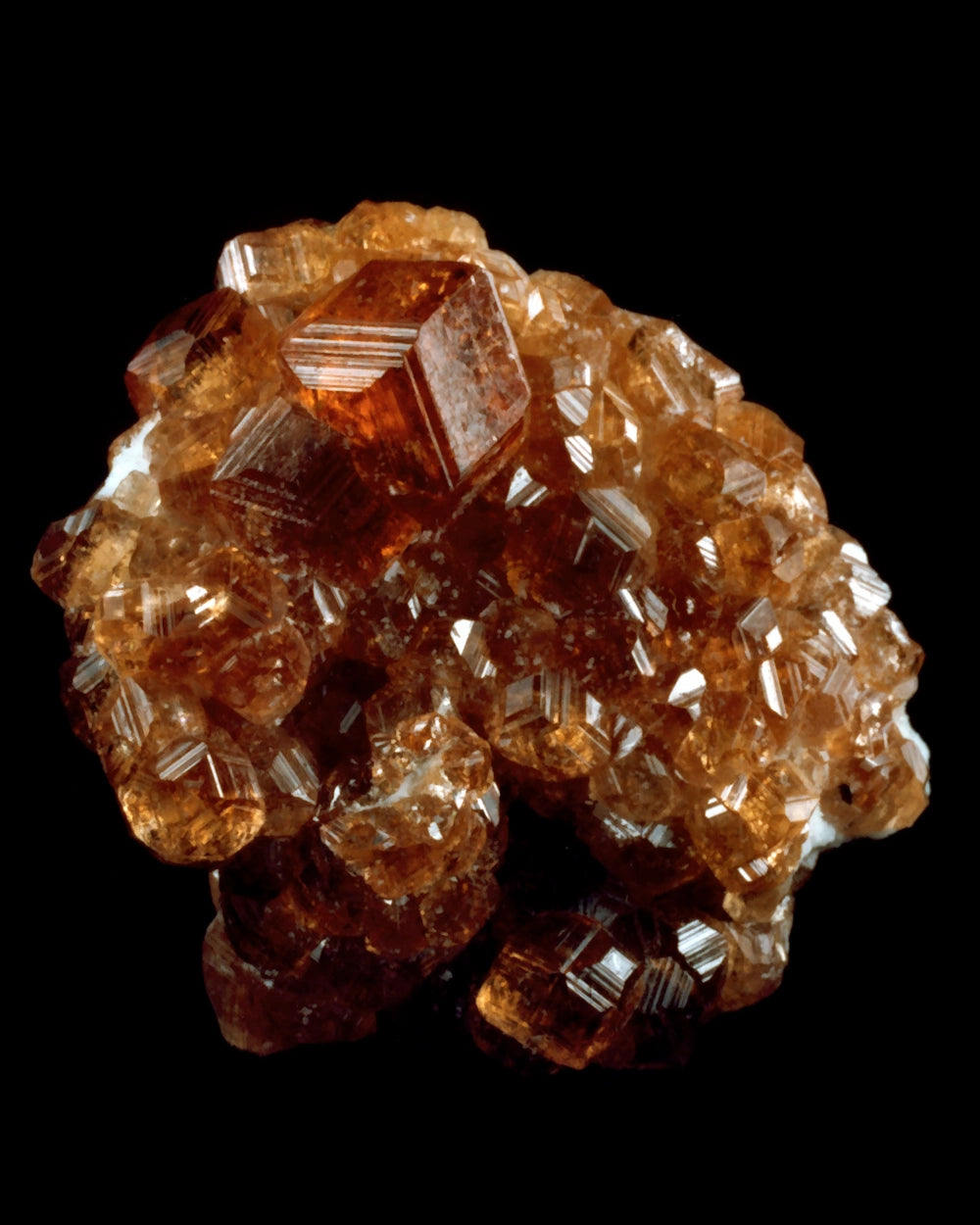If you were born in June, you are fortunate to have three stunning birthstones to call your own. June is one of only three months (along with August and December) that boasts three birthstones, offering a delightful variety of choices.
The June birthstones are pearl, alexandrite, and moonstone. With such a diverse selection, individuals with June birthdays can choose a birthstone that perfectly matches their mood, style, or budget, thanks to the varying colors and price points of these exquisite gems.
Pearl Birthstone Meaning & History
Overview and Origin
The enchanting June birthstone, pearl, originates from oceans, lakes, and rivers around the world. Beloved by women of all ages, pearls have fascinated humans for centuries. Ancients from the Middle East believed that pearls were teardrops fallen from heaven, while the Chinese thought they came from the brain of a dragon. Christopher Columbus and his contemporaries believed mollusks formed pearls from dew drops.

Formation and Types
Pearls are organic gems that grow inside the tissue of a living saltwater or freshwater mollusk (either an oyster or a mussel). Natural pearls form when the mollusk secretes nacre around an irritant such as a piece of sand or a parasite. Cultured pearls result from human intervention: technicians implant a piece of mantle tissue or a mother-of-pearl shell bead into a host mollusk, which then secretes nacre to cover the irritant. Cultured pearls are raised in pearl farms, where mollusks are protected and harvested. Due to overfishing, natural pearls are rare, and cultured pearls now dominate the market, available in a dazzling array of sizes, colors, and shapes.
Historical Significance and Lore
Pearls have long been associated with purity, humility, and innocence, giving the June birthstone its meaning of "sweet simplicity." Traditionally given as wedding gifts, pearls were also believed to have beneficial properties. In the ancient Sanskrit text, the Atharvaveda, pearls were said to bestow long life and prosperity. In Asia, they were thought to alleviate indigestion and hemorrhages. Some 19th-century Arab physicians believed pearl powder improved eyesight, calmed nervous tremors, and eased depression.

Cartier set Elizabeth Taylor’s historic 50.56 ct La Peregrina pearl as part of the pendant to this two-strand pearl, ruby and diamond necklace.
One of the most famous natural pearls is the 50.56-carat La Peregrina, discovered in the 1500s in the Gulf of Panama. This drop-shaped pearl, about the size of a pigeon’s egg, became a prized possession of European royalty. Richard Burton gifted it to Elizabeth Taylor in 1969, and Christie’s auctioned the Cartier necklace containing La Peregrina for $11.8 million in 2011.
Significance as June Birthstone
Pearls, as the birthstone for June, embody the essence of the month with their luminous beauty and symbolic meaning. The association of pearls with purity, wisdom, and new beginnings aligns perfectly with June's spirit of growth and renewal. The tradition of birthstones, dating back to ancient times, assigns specific gemstones to each month, linking them to celestial and mystical beliefs. For those born in June, pearls symbolize the potential for growth and transformation, making them a cherished talisman.
Where Pearls Are Found
Pearl-bearing mollusks thrive in clean waters, so pearl farms are often located in remote, beautiful settings. Saltwater cultured pearls are grown in regions like Japan, China, Australia, Indonesia, the Philippines, and French Polynesia, known for rich black Tahitian pearls. China dominates freshwater cultured pearl production.

Ago Bay, Japan is one of the most important sites for akoya cultured pearl farms.

French Polynesia's atolls shield pearl farms from the surrounding ocean waves. Behind the fringe of palm trees, there's a sheltered lagoon that's ideal for mollusk culturing.
Natural pearls have been found in the Arabian Gulf for at least 5,000 years, with significant historical recovery from the Red Sea and the Strait of Mannar. During Spanish colonial rule, large quantities were harvested from the waters off Mexico, Central America, and Venezuela. Today, only small quantities are found in these areas.
Care and Cleaning
With a hardness of 2.5 to 3.0 on the Mohs scale, pearls are soft and require special care. Store them separately from other gemstones and metal jewelry to prevent scratching. Avoid storing pearls in plastic bags, as plastic can emit chemicals that damage their surface. Always apply perfume, hair products, and cosmetics before wearing pearl jewelry. Clean pearls with a soft, damp cloth after each use to maintain their luster.

Conclusion
Pearls, the June birthstone, weave a rich tapestry of tradition, symbolism, and personal significance. They capture the essence of the month's spirit, offering a timeless connection to nature's rhythms and life's luminous journey. Whether worn as jewelry or cherished as a keepsake, pearls embody purity, wisdom, and new beginnings, making them a classic addition to any wardrobe.
Now that you know more about the history and significance of pearls, you can appreciate these classic beauties even more. If you’re inspired to add pearl jewelry to your collection, consider learning about the GIA 7 Pearl Value Factors™ and using a handy Pearl Buying Guide to make informed choices.
Moonstone Birthstone Meaning & History
Overview and Origin
Moonstone is the best-known gem of the feldspar group of minerals, celebrated for its captivating adularescence—a soft, billowing light effect that creates a glowing sheen across the stone. The finest moonstones exhibit a blue sheen against a colorless background. This June birthstone has rich mythological associations, linked to Roman and Greek lunar deities, and in Hindu mythology, it is said to be made of solidified moonbeams. Moonstone is often associated with love, passion, and fertility and is believed to bring great luck.
Historical Significance and Lore
Throughout history, moonstone has been revered for its mystical qualities. In the Art Nouveau era (1890s–1910s), prominent designers like René Lalique and Louis Comfort Tiffany incorporated moonstone into their exquisite jewelry pieces. The stone saw a resurgence in popularity during the 1960s “flower child” movement and again with New Age designers in the 1990s. An example of its historical use is a Frankish disk brooch from the second half of the 7th century, featuring gold sheet, filigree, moonstone, glass cabochons, garnets, and mother-of-pearl, showcasing the timeless appeal of this gem.

Frankish disk brooch from the second half 7th century. Medium: Gold sheet, filigree, moonstone/adularia, glass cabochons, garnets, mother-of-pearl, and moonstone. Courtesy: The Metropolitan Museum of Ar
Significance as June Birthstone
As a June birthstone, moonstone embodies the essence of the month with its enchanting glow and deep connections to lunar deities and mythology. The stone symbolizes love, passion, and fertility, aligning with the growth and vibrancy of early summer. Moonstone's association with luck and its mystical properties make it a meaningful talisman for those born in June, enhancing their natural charm and emotional depth.
Where Moonstone is Found
Moonstone is found in various locations around the world, including parts of the United States such as New Mexico, North Carolina, and Virginia. The most significant sources of moonstone are India and Sri Lanka, known for producing high-quality stones. Additional sources include Brazil, Madagascar, Myanmar, and Tanzania. In Sri Lanka, miners use water to sift through rocks to find moonstone, a method that helps preserve the stone's delicate structure.

Rough moonstone found in Sri Lanka
Care and Cleaning
With a hardness of 6–6.5 on the Mohs scale and poor toughness, moonstone requires gentle care to avoid damage. It may crack under high heat, so ultrasonic and steam cleaners should be avoided. The best cleaning method is using warm, soapy water and a soft brush. Proper storage is also important—keep moonstone jewelry separate from harder gemstones to prevent scratches.
Moonstone Engagement Ring-Arabella Birthstone Ring
In Summary
Moonstone, as a June birthstone, offers a unique blend of beauty, history, and mystical significance. Its soft glow and rich mythology make it a cherished gem for those born in June. From ancient adornments to modern jewelry designs, moonstone continues to captivate with its enchanting allure. Whether worn for its aesthetic appeal or its symbolic meaning, moonstone is a timeless addition to any jewelry collection.
Now that you know more about the history and significance of moonstone, you can appreciate these captivating gems even more. If you’re inspired to add moonstone jewelry to your collection, consider exploring various designs that highlight its unique beauty and mystical charm.
Round Tanzanite Moonstone Cluster Engagement Ring
Alexandrite Birthstone Meaning & History
Overview and Origin
Alexandrite, the rare and captivating variety of the mineral chrysoberyl, is celebrated for its remarkable color-changing properties. This gem, prized for its vivid green to bluish-green hues in daylight or fluorescent light, transforms into an intense red to purplish-red under incandescent light. Discovered in 1830 in Russia's Ural Mountains, alexandrite was named after the young Alexander II (1818–1881), heir apparent to the Russian throne. Its red and green colors mirrored the national military colors of imperial Russia, capturing the country's fascination.

Historical Significance and Lore
Alexandrite's unique color-changing ability has made it a symbol of duality and balance. In Russian folklore, it was believed to bring good luck and fortune. The stone's association with Czar Alexander II further cemented its status as a gem of royalty and prestige. Its connection to the national military colors of Russia also added to its allure, making it a patriotic symbol as well.
Physical and Chemical Properties
When certain types of long, thin inclusions are oriented parallel to each other in this June birthstone, they can create another phenomenon called chatoyancy or the cat’s-eye effect. Few gems are as fascinating or as stunning as cat’s-eye alexandrite. With a hardness of 8.5 on the Mohs scale and excellent toughness, alexandrite is durable enough for daily wear, making it an ideal choice for rings and other jewelry pieces.
Where Alexandrite is Found
The original Ural Mountain deposits were eventually depleted, leading to the discovery of new sources in Brazil, Sri Lanka, and East Africa. These newer deposits produce fine-quality stones, though they often display less precise color change and muddier hues compared to the 19th-century Russian alexandrites. Due to its scarcity, especially in larger sizes, fine-quality alexandrite remains one of the most expensive colored gems.

Notable Examples
- The Tunduru Region of Tanzania: A notable source of alexandrite, producing stones with striking color changes. For example, a 7.19-carat alexandrite from this region shows a vivid green in fluorescent light and a rich purple in incandescent illumination.
- Brazil: The Corrego do Fogo mine near Malacacheta is renowned for its alexandrite production, contributing to the gem’s global supply.
Alexandrite Birthstone Care & Cleaning
This June birthstone's relative hardness and excellent toughness make it suitable for various jewelry settings, including daily-wear pieces like rings. Alexandrite engagement rings are particularly unique and meaningful gifts for those born in June. For cleaning, warm, soapy water is recommended, though ultrasonic and steam cleaners are generally safe to use as well.
Alexandrite 14k Gold Leaf-Inspired Bridal Ring Set
Prominent Jewelry Pieces
- Alexandrite and Diamond Ring: A stunning example is a 5.16-carat oval alexandrite ring, surrounded by brilliant round diamonds and alexandrites, set in platinum. This piece showcases the gem's luxurious appeal and exceptional beauty.
Morning Glory Inspired Alexandrite Ring Set 2pcs
Celebratory Significance
June is a month filled with celebrations, from weddings and anniversaries to graduations and birthdays. Alexandrite, with its enchanting color change and historical prestige, offers a unique and memorable way to mark these special occasions. Those born in June are fortunate to have three gorgeous birthstones to choose from, including alexandrite, pearl, and moonstone, each with its own unique allure.
Conclusion
Alexandrite stands out not only for its stunning visual properties but also for its rich history and symbolic meanings. Whether chosen for its beauty, rarity, or the fascinating lore surrounding it, alexandrite is a timeless treasure that adds a touch of elegance and mystique to any jewelry collection.










